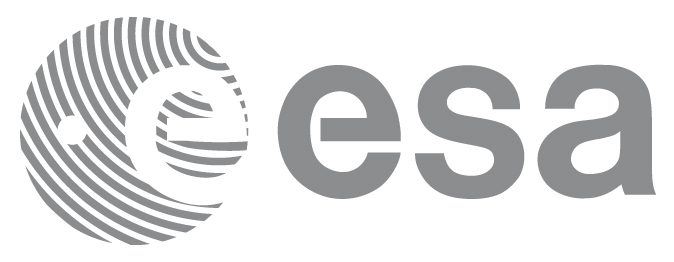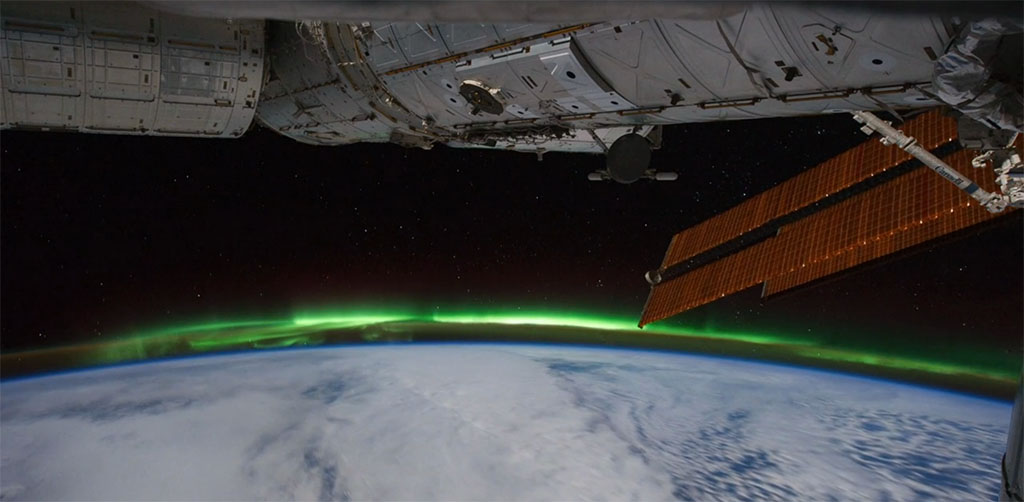In early 2016 at the request of its Council, the European Space Agency (ESA) commissioned an external consulting company, PwC, to make an assessment of ESA’s and its Member States’ EUR 8 billion investments in the International Space Station (ISS) programme over the past 30 years.
The same GDP (Gross Domestic Product) impact assessment methodology was applied to the ESA Launcher programmes, to the EU Copernicus programme, and will be applied to the EU Galileo programme.
The study focusses on the European share of the development, exploitation and utilisation of the international orbital outpost. Socio-economic impact assessments are important for public institutions. Such studies demonstrate the broad benefits of public spending, and help provide transparency vis-à-vis stakeholders.
Adding value to mankind
The study provides a global European perspective within the economies and industries of ESA Member States. It offers stakeholders solid evidence of the benefits from investing in the ISS programme. It also evaluates the positive impact of extending ESA involvement in the Space Station until 2024 – the ISS programme turns out to be the most efficient way of turning cash payments into utilisation assets.
Adding value to ESA and its Member States
The study shows a very good return on investment of public funding, with significant direct and indirect impacts in all Member States participating in the ISS programme. Investments in this programme contribute, as well as in other sectors of the space industry, to industrial competitiveness and to the development of a knowledge-based society.
MAJOR BENEFITS FOR EUROPEAN ECONOMY
The estimated value added generated over the entire ISS programme period (1995-2016) amounts to EUR 14.6 billion, while the total ESA funding is equal to EUR 8 billion. This represents a Gross Value Added multiplier of 1.8. Equivalent multipliers for manufacturing industries in Europe are typically in the range of 1.1-1.3.
For each new job in the space sector linked to the ISS programme, nearly one additional job was supported in the wider economy.
Jobs
- Employment multiplier: 1.9x
- Every 100 jobs in the space sector generates 90 additional jobs
- Extra employment: 210 000 persons/year
- Largest gains: retail, recruitment, professional services and construction industries
Competitive industry
The injection of ESA funding in the upstream industry leads to a cascade of spending and economic activity down the supply chain, through components and subsystems suppliers, and employee’s spending in the larger economy.
The development and exploitation activities funded by ESA leads to a positive spill-over effect within the space industry. Each euro awarded in ESA contracts generates 2.3 euro of additional revenues, especially for medium-sized enterprises, in the form of spin-offs and through the commercialisation of new products or services.
The top 5 non-space sectors with the largest gains under the International Space Station programme accounted for 32% of all the additional value generated between 1995 and 2016.
| Non-space sectors | M€ | Share % |
|---|---|---|
| Real estate | 588.7 | 6.2 |
| Legal, accounting, consulting | 585.2 | 6.2 |
| Wholesale excl. motor vehicles | 569.7 | 6.0 |
| Retail excl. motor vehicles | 538.8 | 5.7 |
| Computing services | 379.2 | 4.0 |
| Computer, optical, electronics | 372.5 | 3.9 |
Innovation
From remotely monitoring an astronaut’s health to allowing long-term storage in orbit, space systems call for new technologies linked to miniaturisation of components and maximum reuse of resources, while applying the highest safety standards.
Space technologies bring upon vast benefits and new growth opportunities for businesses and industry. Many European small and medium-sized companies have capitalized on the ISS experience with spin-off solutions for commercial and humanitarian purposes on Earth.
| Type of stakeholder | Multiplier (*) | Type |
|---|---|---|
| Research centres | 0.05 | Annual |
| SMEs | 0.47 | Annual |
| Large space integrators | 2.24 | One-off |
| Aggregated | 2.20 | Annual / One-off |
Through the ISS, European companies, Large Space Integrators and a large number of space and non-space SMEs have successfully completed the challenging task to develop infrastructure and subsystems able to support the continuous presence of human beings in space.
Most technologies developed for the ISS have found applications in other space projects, such as the external welding and thermal control systems for the Columbus module and the Automated Transfer Vehicles (ATVs). European industries involved in the NASA Multi-Purpose Crew Vehicle (MPCV) and Orbital’s Cygnus capsule have attracted EUR 1 B in contracts.
There are also spill-over applications for planet Earth. Recycling waste water and urine into drinking water is not only for astronauts. ESA is working on the best technology for a closed life-support system that recycles critical resources such as air and water.
| ISS developed technology | Space applications | Earth applications |
|---|---|---|
| Habitat design and operation
|
Planned for deep space habitats | Construction building: self-sustainable/smart buildings |
| Welding of primary pressurised structure | Cygnus commercial transportation system
Planned for deep space habitats |
N/A |
| Advanced Closed Life Support (incl. combination with biological life support)
Regenerative environmental control systems |
Exploration missions (LEO and beyond) for the optimised resource utilisation and recycling.
Exploration mission (beyond LEO) local production of critical resources |
Submarine technology: resource utilisation /optimisation for extended underwater operations
Construction building: self-sustainable/smart buildings |
| Rendezvous and docking | Space: in-orbit satellite servicing, debris removal, asteroid deflection missions | Submarine technology: automated submarine docking systems |
| Space Robotics & Artificial Intelligence | Support to manned and un-manned exploration mission operations
In-orbit servicing and debris removal application |
Remote operations: Telemedicine, Hazardous operations (deep ground mining, fire prevention) |
| Long term food and water storage | Exploration missions, long term food and water supply for deep space exploration
|
Retailing: single serving food packages, long term storage with no refrigeration
Crisis and disaster management: water and food supply during humanitarian and natural disaster crisis Support to developing countries: provision and long term storage of drinkable water in remote and deserted areas. |
| 3D printing in space | Exploration missions: on-site manufacturing of spare parts and components | Support to developing countries: on-site manufacturing of spare parts and components |
BEST SCIENCE FOR HUMANKIND
- The ISS is a unique research platform. This orbital laboratory allows to carry out experiments in microgravity with the direct support of astronauts. Intensive science, research and effective use of this laboratory leads to new applications and benefits for people on Earth.
- Since 2001, European research in orbit has doubled to reach a record high of nearly 70 experiments per year. Space research will be supported via SciSpace (Science in Space) as part of ESA’s new European Exploration Envelope Programme (E3P).
INVESTIGATION AREAS
- Over 1500 European scientists are currently involved in space research. Overall, ESA’s involvement in the Space Station has allowed the completion of more than 800 experiments. About 75% of these experiments were sponsored by European funds involving both institutional and commercial European research organisations. The rest were co-financed in cooperation by ISS partners.
- The European scientific community pursues research to the very best at a global level. This is evidenced by a good publication track record. The average production of scientific publications in the last decade has been between 350 and 400 per year.
EUROPEAN SCIENCE
- 1500 European scientists
- 800+ experiments
- 350+ scientific papers per year
INVESTING IN THE FUTURE GENERATIONS
ESA invests in a whole range of educational activities for the new generations to ensure a good knowledge transfer to the European skilled workforce of the future. Human spaceflight is a strong inspirational element and a rich context that teachers use to make their STEM (science, technology, engineering, mathematics) lessons more engaging.
INSPIRING THE PUBLIC
ESA astronauts invite students of all ages to share the trip and the excitement of their space adventure. As part of this trip, astronauts teach about space subjects in European universities every now and then. They support the development of student led research in space, and consolidate the inspirational value of ISS.
Astronauts make it easier for people to relate to space activities and get inspired. They are particularly good at using social media, an innovative and direct tool to communicate about space. An analysis of Twitter and YouTube platforms shows that astronauts and the Space Station catch the interest of the audience more than any other ESA space programme.
ASTRONAUT ENGAGEMENT
- The number of Twitter followers of the last six ESA astronauts during their flight to and stay in the ISS is well above is most cases to the followers of the astronaut’s country Prime Minister at the time of their flight into space. (Data from December 2016)
- ESA’s YouTube channel has over 15 million views on videos showing the live and work of our astronauts in orbit. Six of the ten most popular videos posted on ESA’s YouTube channel in 2016 were related to ISS.
BETTER TOGETHER
The ISS is an exceptional example of how working together in space can help overcome political and cultural differences. This partnership has consolidated solid relationships between space agencies and proved Europe’s value as a highly reliable partner.
Cooperation between different stakeholders has generated benefits along the entire value chain, including exchanging know-how on space project’s best practices, and spin-off of innovative technologies.
International partners wish to maintain this human outpost operational as a stepping stone for deep space exploration until the commercial sector is ready to fully exploit it.
A deep space transportation system – Orion – and the robotic exploration of the Moon – Luna-Resource – and of Mars – ExoMars –are great examples of on-going international cooperation in space.
ISS AND BEYOND
The ISS and Human Spaceflight programmes represent a modest 8-9% of the current ESA budget (~ EUR 3.4 billion per year for the next three years). However, exploration and sustainable long-term permanence in Low Earth Orbit (LEO) are fundamental elements of the overall ESA’s exploration strategy leading all the way down to Mars sample return and manned exploration.
The ISS is completing the exploration cycle for the LEO orbit and supports the preparation for future space destinations such as the Moon and Mars. International partners will maintain this outpost operational as a stepping stone for deep space exploration until 2024, working with a burgeoning private sector to fully exploit it in a not so distant future.
See also







